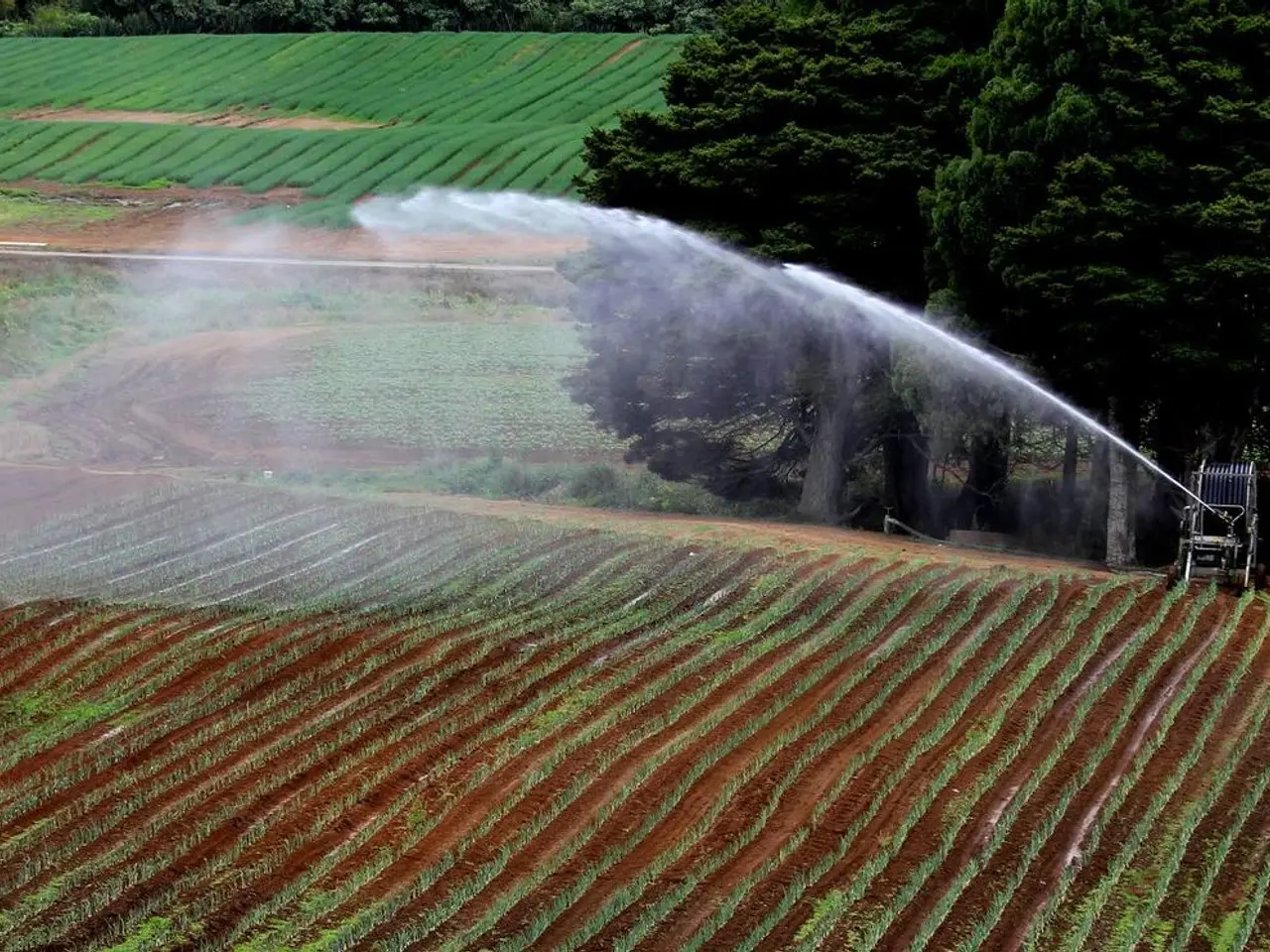Old Age Blooms New Hopes: Tale of a 68-Year-Old Woman Transforming a Single Acre in Faridabad into a Therapeutic Farm
In the heart of India, a sustainable agriculture initiative named the Art of Living Natural Farming movement is making a significant impact, transforming the lives of millions of farmers and promoting environmental restoration. Founded by Gurudev Sri Sri Ravi Shankar in 2009 under the Sri Sri Institute of Agricultural Sciences and Technology Trust (AOL-SSIAST), this movement has been instrumental in championing natural, chemical-free farming methods, indigenous seed preservation, and the creation of climate-resilient farmland.
The movement has trained over 3 million farmers across 23 Indian states, empowering them with techniques that not only enhance soil health but also reduce dependency on chemicals. This is particularly evident in suicide-prone districts where farmers have adopted these sustainable practices, leading to improved livelihoods and hope for the future.
Moreover, the movement has converted over 56,000 acres into chemical-free, climate-resilient farmland. A network of 2,300+ certified trainers propagates these methods, ensuring their reach extends far and wide. The benefits are manifold: better yields, sustainable water management, improved water availability, and increased farmer incomes.
For instance, in areas implementing these practices, water tables have risen by up to 14 feet, crop yields have increased by 42%, and farmer incomes have grown by 120%. The JalTara project, a key initiative, raises groundwater levels by channeling rainwater and reducing waterlogging.
Beyond agriculture, the movement contributes to massive tree planting and reforestation efforts. Over 100 million trees have been planted across 26 Indian states and beyond, and medicinal plants dispersed, enhancing biodiversity and ecosystem health.
One shining example of this transformation is Sarla Garg, a farmer from Faridabad. Sarla began her farming journey two decades ago, during a time of personal grief and financial struggle. Today, her one-acre plot and terrace are a green oasis, a testament to the power of natural farming. Using Jeevamrut, cow dung, mulch, and no chemicals, she has created a thriving farm that yields an abundance of rosemary, rocket leaves, kale, cherry-sized tomatoes, brinjal, strawberries, and turmeric.
Sarla's farming practices are part of a larger movement promoting sustainable farming in India. Her farm is fenced see-through, allowing visitors to witness the difference in her organic farming methods. Her son and four helpers are trained in her methods, ensuring the tradition continues.
The Art of Living Natural Farming movement integrates ancient wisdom with modern sustainable farming, positively affecting millions of Indian farmers by improving soil health, reducing costs, increasing productivity, enhancing water availability, and revitalizing rural livelihoods. As we look towards a sustainable future, this movement offers a beacon of hope for environmental health, boosted productivity, and long-term food security.
[1] Art of Living Natural Farming: Transforming Lives and Landscapes (2025) [2] Sustainable Farming in India: A Pathway to Long-term Food Security (Related Link) [3] The Impact of the Art of Living Natural Farming Movement on Indian Agriculture (2023)
- The Art of Living Natural Farming movement, through its sustainable practices, has extended beyond agriculture to incorporate home-and-garden initiatives, such as Sarla Garg's green oasis that flourishes using Jeevamrut, cow dung, mulch, and no chemicals.
- As a result of the Art of Living Natural Farming movement's impact on Indian agriculture, lifestyle improvements are now evident even in gardening practices, with homeowners increasingly adopting natural, chemical-free methods, much like Sarla Garg, to create sustainable, climate-resilient gardens.





